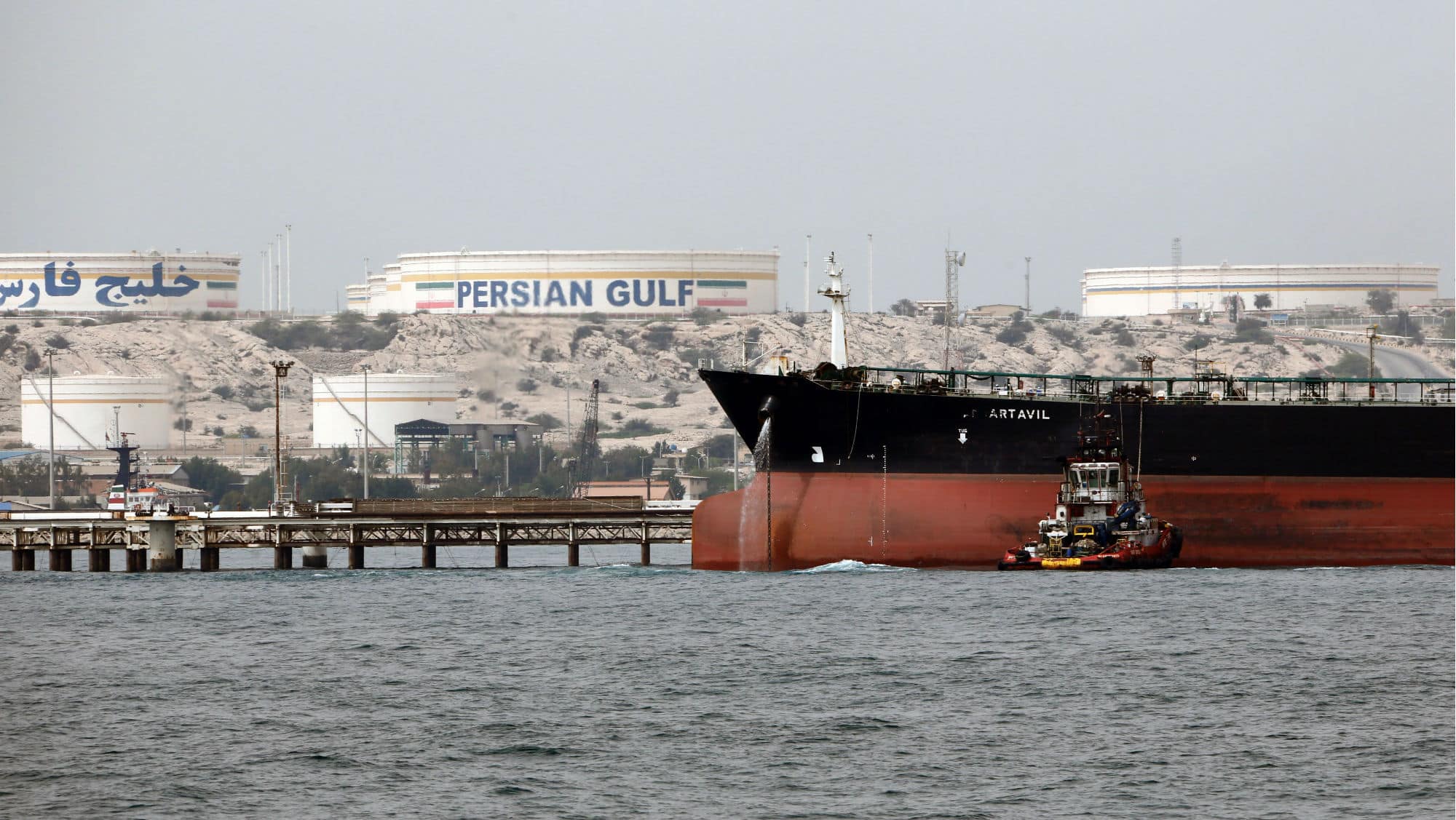The Strait of Hormuz links the majority of the world’s people who live along the shores of Asia and East Africa to the heart of the Middle East. Long before the discovery of oil, it was the world’s carotid artery. Cut off the blood supply almost anywhere else and the world would adapt. Here, however, an interruption could be fatal: 90 percent of oil exported from the Gulf, about 20 percent of the world’s supply, passes through Hormuz. Shipping through the strait, which is a mere 21 nautical miles wide at its narrowest point, is concentrated and hazardous. In Musandam, the Omani exclave on the strait’s southern side, you can hear Persian radio from Iran as often as Arabic. Along the rocky shorelines, islets and peninsulas thrust precipitously into the sky. Heat, humidity, and a scorching wind make the climate inhospitable; many mountain ranges and valleys near Hormuz remain sparsely inhabited.
Although Persia tried to claim it, no one group has ever actually controlled the entire Strait of Hormuz. On Musandam, Shihuh mountain groups and Dhahoori fishermen have historically maintained some autonomy from Muscat. On the northern, Persian side, Iran is as vulnerable to disruption as are many of the ships that pass through the strait. Iran based its oil terminal on Larak Island, in the strait, after Iraq attacked its previous installation on Kharg Island further inside the Gulf. Larak, Hormuz, Qeshm Island, and the Persian Gulf coast of Iran are inhabited by a mixture of Persians and Sunni Arabic speakers who migrated there from the Arabian Peninsula before the rise of international maritime boundaries and who differ from the majority population in Iran. There has long been trouble for Iran brewing in the hills. The Baluchis inhabit mountains nearby and the Makran Jundallah (Soldiers of God), a Sunni Baluchi separatist movement, have mounted deadly attacks against Iran, including killing 15 members of the Islamic Revolutionary Guard Corps in a 2009 bombing. The diversity on land is eclipsed only by the sheer number and variety of ships passing through the strait. Without a single controlling power, it is in the interest of the United States, as the foremost naval power in the world, to serve as the ultimate guarantor of trade through Hormuz.
Historically, that has meant preventing the pendulum from swinging too far in one direction or the other. In 1987, the United States intervened in the Iran-Iraq War to prevent attacks against Kuwaiti ships. In 1988, the United States sank Iranian warships and patrol boats during the so-called tanker war. Just a few years later, the United States began the first Gulf War to stop Iraq from seizing Kuwait. Iran has learned from that history, realizing that the most effective strategy, in its attempt to gain a better negotiating posture and to end crippling sanctions, is not outright conflict but subterfuge. It has begun sending small, lightweight vessels to harass and attack huge tankers and container ships.
The stakes in the strait today are much higher than they were in the 1980s and 1990s, as a confrontation over shipping could lead to a full-blown war between Iran and the United States, one that could even turn nuclear. Instead of assuring the region’s security, however, the United States has pursued short-term benefits, selling arms to Gulf partners and taking sides in largely fruitless inter-Gulf squabbles, driving partners such as Qatar toward Iran and allowing the Saudis to take too many risks, such as by intervening in the Yemeni civil war.
One reason for this destabilizing opportunism may be the faulty assumption by U.S. policymakers that the Carter Doctrine, under which the United States vowed to use military force to protect its interests in the Gulf, no longer applies. As the United States consumes less oil from the Middle East, the argument goes, its need to ensure the security of the region also decreases. That, however, misunderstands both history and geopolitics. The United States depends on Gulf security for more than oil. First, and most crucially, the rising possibility of nuclear conflict, as Iran has rapidly started enriching uranium after the United States pulled out of the nuclear deal, has changed the security dynamic in the region. Saudi Arabia and the UAE are both now more interested in acquiring nuclear technology, and have better access to it, as even the United States has provided them with sensitive nuclear materials and know-how. The security of the strait now matters not simply because of trade; a conflict in Hormuz could spark a firestorm that could quickly spread beyond the Gulf. Second, the amount of trade that passes through Hormuz has grown rapidly with the rise of the wealthy oil states along the Gulf. Finally, the United States has invested heavily in naval bases, in Bahrain, Qatar, and elsewhere, that are accessible by sea only through Hormuz. The Strait of Hormuz will remain the world’s most valuable and vulnerable trade and maritime chokepoints, no matter how much oil prices might decline.
Redazione
La redazione di Babilon è composta da giovani giornalisti, analisti e ricercatori attenti alle dinamiche mondiali. Il nostro obiettivo è rendere più comprensibile la geopolitica a tutti i tipi di lettori.
L’evoluzione dei sanitari a terra: design moderni e materiali innovativi per una scelta sempre più popolare
23 Dic 2024
Quando si parla di design di interni e arredamento sono tantissimi i fattori che entrano in gioco. Ciascuno di noi ha…
Se le questioni di genere dettano le agende di politica estera
19 Dic 2024
Il perseguimento di politiche identitarie da parte dell'establishment della politica estera occidentale sta portando a…
Dall’origine straniera all’icona americana: il fenomeno dello sport negli Usa
14 Mar 2024
Molti sport americani sono accomunati da un aspetto particolarmente curioso: raramente sono davvero nati sul suolo…
Roulette europea, francese o americana? Ecco un approfondimento
22 Set 2023
La roulette è un classico intramontabile dei casinò, amata da milioni di appassionati in tutto il mondo. Una delle…




